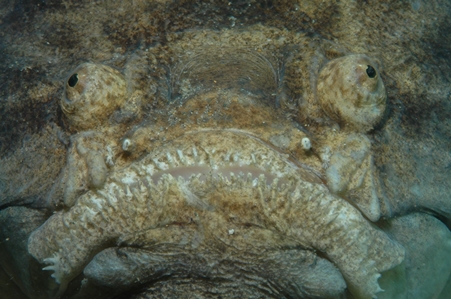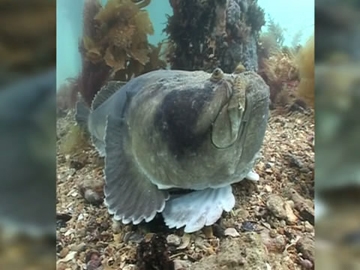General Description
Body robust, tapering towards the tail; head huge, squarish, bony; mouth large, upturned, giving an almost "bulldog"-like appearance; eyes on top of the head as the common name suggests; pectoral fins large, with a stout spine on top of fin base. Body dull greyish to brownish on top, paler below, with two dark bands or saddles across the back and a large dark smudge below the eye; markings becoming indistinct with age. To 75 cm.
Biology
Stargazers are ambush predators and frequently bury themselves leaving only their eyes and top of the head exposed. They may be aggressive to divers, and the large spine projecting backwards above the gill opening is reportedly venomous.
Habitat
Sandy bottoms in sheltered bays and in moderately exposed coastal areas, in depths of 0-150 m.
Soft substrates
Distribution guide
Southern Australia.
Species Group
Depth
Shore (0-1 m)
Shallow (1-30 m)
Deep ( > 30 m)
Water Column
Max Size
75 cm
Diet
Carnivore
Harmful
May be aggressive and has a large venomous spine above gill opening.
Commercial Species
No
Global Dispersal
Native to Australia
Conservation Status
- DSE Advisory List : Not listed
- EPBC Act 1999 : Not listed
- IUCN Red List : Not listed








